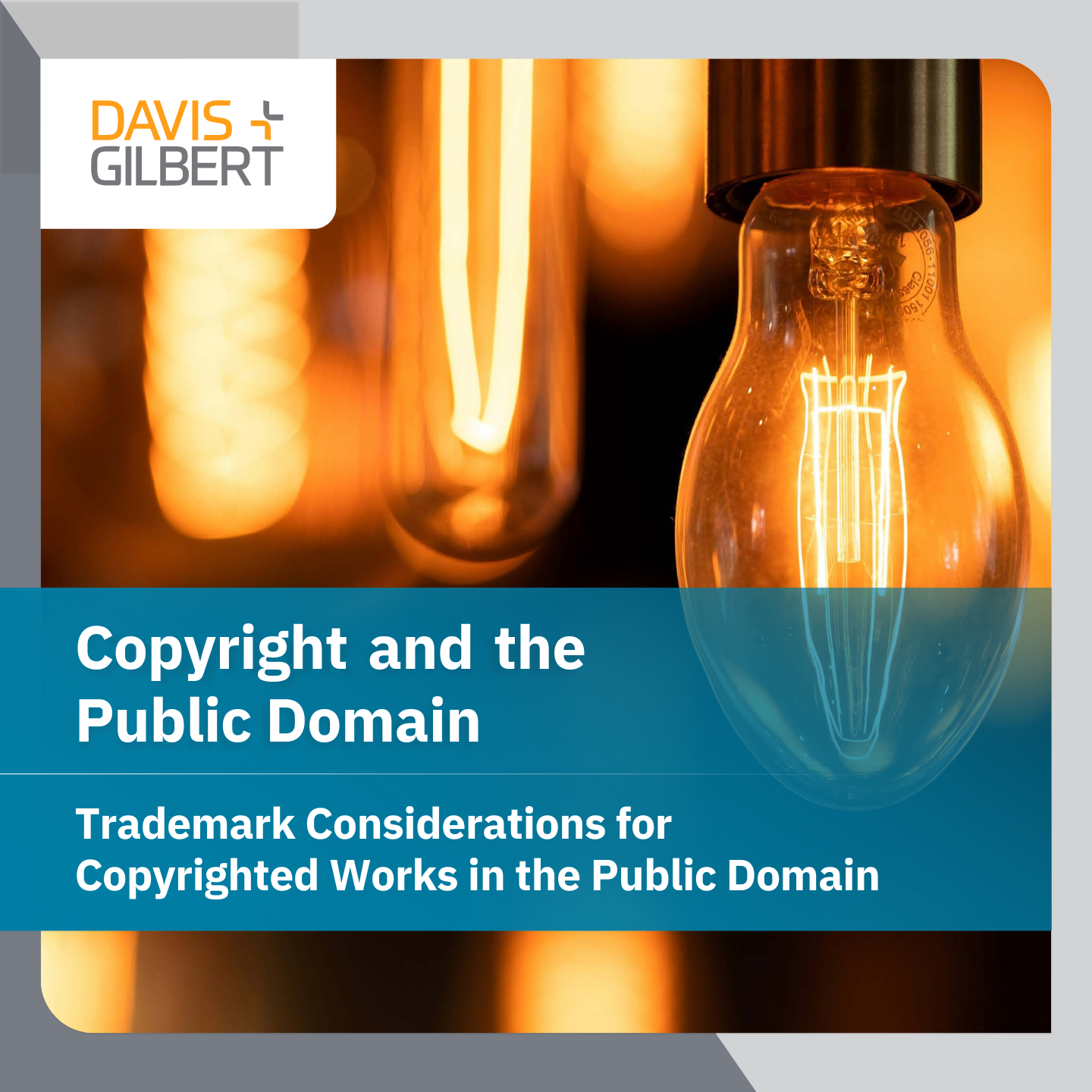Trademark Considerations for Copyrighted Works in the Public Domain

Trademark Considerations for Copyrighted Works in the Public Domain
By: Joy Wildes & Claudia Cohen


In the United States, an original work of authorship fixed in a tangible medium of expression (meaning the work can be communicated in a visual or audio form) is a protectable copyright. This means that the owner has the exclusive right to reproduce, adapt, publish, perform and display the work. Because copyright protection has a set term, copyrights in certain works necessarily expire each year and enter the public domain. Once a work has entered the public domain, it no longer retains copyright protection and cannot stop use of the work by others based on its prior copyright rights. However, a work’s copyright expiration does not extinguish any trademark rights that the owner may maintain in that same work. This is because protection of trademarks, which are words, phrases, symbols and designs that identify the source of goods or services, is separate from protection of copyrights and does not necessarily expire so long as the work is continuously and regularly used as a trademark.
On January 1, 2024, the copyrights in a number of recognizable works entered the public domain, including, among others, Disney’s iconic Mickey Mouse film “Steamboat Willie,” along with the specific depictions of Mickey Mouse and other characters in the film; A. A. Milne’s book, with illustrations by E. H. Shepard, “House at Pooh Corner,” which introduced the Tigger character; and D.H. Lawrence’s book “Lady Chatterley’s Lover.” This means that there is no longer copyright protection in these works or the specific depictions of characters in them. But it is important to remember that any existing trademark protection in them subsists.
For example, Disney owns separate and enforceable trademark rights in its Mickey Mouse character and has apparently taken steps to shore up its trademark rights in “Steamboat Willie.” Specifically, Disney owns a federal trademark registration for an iconic video clip from the “Steamboat Willie” film, which is used in connection with certain Disney motion pictures. Further, Disney still owns valid copyright and trademark rights in other, more modern versions of Mickey Mouse.
What does this mean for marketers who may be interested in producing advertising content using copyrighted works that have entered the public domain? They should closely consider whether these proposed uses present trademark and false advertising risks. They should also assess whether proposed modifications to the depiction of public domain content may nevertheless present copyright risks to the extent that such modifications are substantially like variations of such characters that are not yet in the public domain and are still subject to copyright protection.
